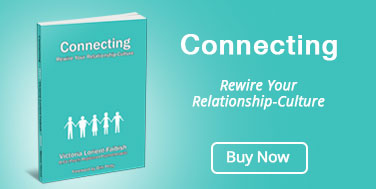Transcribed from my video at www.youtube.com/askvictoria.
Understanding that the brain biology is implicated in patterns of behaviour and beliefs is a crucial piece in initiating transformation. The newer patterns of behaviour and beliefs are like footpaths compared to the highways that are associated with the longer held belief or patterns. Don’t beat yourself up if you have not been able to change a pattern that has been with you since childhood. You are up against your biology. Having said that, the more you practice a new behaviour the more likely you are to shift it to the more desired pattern you are seeking. This repetition thickens that neural pathways and makes the new behaviour easier to maintain.
In my practice, and in the You Tube environment, I get a lot of questions about the neural pathway thing that I’ve talked about in a couple videos. It’s neural science; basically we have many neural pathways in our brain, and it has been shown scientifically that any belief that we hold strongly is in relationship with the neural pathway. Any belief that is repetitive, learned at an early age, is consistent, is going sort of rote all the time, believing the same kinds of things, family culture, belief systems that you inherit from your family, belief systems that are un-thought-about, “This is what I think. This is how I am. This is my personality. This is how it is.” These neural pathways are major highways in our brains, major grooves, and it’s very difficult to go away from them because they’re so grooved in our brains. New beliefs, new thinking, new patterns of behaviour (trying to quit smoking, trying to curb your codependence, trying to bring down your anxiety responses), all those new behaviours and beliefs correspond with neural pathways that are like footpaths: very small, think, undeveloped. If you’re trying to create a new behaviour in your life, it is very important that you become very conscious that you’re up against the biology of your being; it’s not just, “I’m a bad because I’m not doing this new thing I’ve decided to do. I’m not good enough because I can’t quit smoking on the first go.”
(2:08) Let me tell you something: you’re up against your biology, and the very thick highway-like neural pathways in your brain. So cut yourself a break. But understand if you want to change (and I am encouraging change where needed) that you go about a systematic approach understanding what you want to change, getting very clear about the specific thing you want to change. Perhaps the thing is, “I no longer want to experience anxiety when I’m speaking publicly.” This thing isn’t just going to go away. You’ve got to be methodical, scientific, about how you change behaviour, because you’re up against your biology. Very important: Number one, identify what you want to change. And a great way to do it is to try small, new behaviours, and incrementally increase those new behaviours, and try to become conscious of what you’re thinking when you’re engaging of the new behaviours. If you’re thinking during the new behaviour, “This is never going to happen. I’m totally a failure. I’m not worth anything,” guess what? Those neural pathways are going to be getting thicker and thicker alongside the behaviour neural pathway. So it’s important that you really throw yourself into change, with compassion that it’s not going to happen immediately, and allow yourself to couple the new behaviour with accompanying positive, encouraging, self-supporting thoughts, beliefs and information that you give yourself.
(3:55) I see a lot of people getting very discouraged when they try to wean themselves off emotional eating, for example. The reality is (to get away from the neural pathway conversation) any of the behaviours that we engage in, for some reason our subconscious is trying to do something positive, even though the behaviour is negative. For example, if you engage in anxiety before getting up on a stage to talk, when you linger and ask yourself, “Why am I engaging in all this anxiety? What is this anxiety trying to do for me?” If you sit with it, it’s probably saying, “I want you to do a good job. I want you to be accepted by the people seeing you. From that acceptance I will get a sense of peace and being liked.” So there is a positive purpose to the negative behaviour. When you’re working with the neural pathway conversation in changing behaviour, what would be very helpful is to find the positive purpose to the negative behaviour you’re trying to change. Eating emotionally, sitting with that, some people say, “I’m trying to feel full, because I’m actually empty.” What will feeling full actually bring you? “Well it will probably bring me a sense of calm, ease and peace.” So you’re trying to get calm, ease and peace. Let’s see if you can first engage in not repeating that negative behaviour, because you say to yourself, “That negative behaviour has a positive purpose. Can I get that positive purpose without the negative behaviour? Can I get calm, peace and relaxation without the emotional eating?” You’ll probably start to think creatively about what else could bring calm and peace into your system without the negative pattern behaviour. Eventually, the neural pathways that are thin footpaths will become thicker and more evolved like freeways, like the neural pathways of the negative behaviours were.
(6:25) A bit of a possibly confusing topic, but something really worth talking about and presenting to you. Keep working on the new neural pathways of positive behaviour for your own good! Have a great day.
Victoria Lorient-Faibish MEd, CCC, RPP, RPE
Holistic Psychotherapist
Masters in Educational Psychology
Canadian Certified Counsellor
Registered Polarity Practitioner
Registered Polarity Educator
Reiki Master
New Decision Therapy









Does this really work? What I know is that a changed behavior is a result of a changed heart. But this was an interesting read.